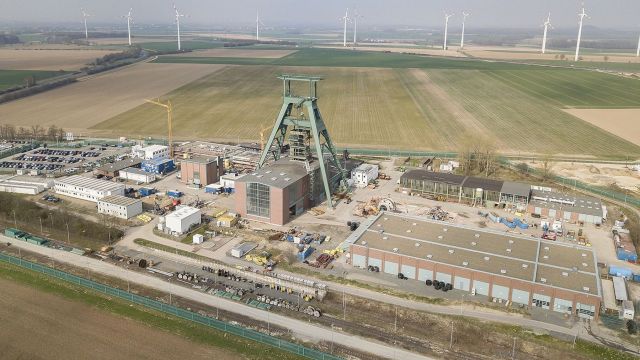
2009 Konrad Transport Study
According to government plans, the former Konrad iron ore mine is to become operational as a repository for low- and medium-level radioactive waste from the year 2019. Funded by the Federal Environment Ministry, GRS examined the potential radiological effects of waste shipments to the repository within the framework of the Konrad Transport Study.
Object of the Study
To do so, GRS took a closer look at two scenarios − a normal, accident-free transport and a transport accident. In both cases, the Study concentrated on possible effects within a radius of 25 kilometres around the Konrad repository. The analyses considered not only the people living or working in this are but also the transport personnel.
The calculations were based on the registered radioactive waste intended for emplacement in the Konrad repository at the time of the study. This waste has a volume of around 110,000 m³, which largely corresponds to the amount that can be received and emplaced within a ten-year period. 56% of this waste is originated by research, 41% by the operation and decommissioning of nuclear power plants and by the nuclear industry. The remaining three percent come from technological and medical uses.
Around 20 % of the total radioactive waste is to be delivered by road transport; approx. 80 % is to arrive at the repository by rail, using the normal goods rail network.
Results of the 2009 Konrad Transport Study
GRS has come to the conclusion that the potential radiological effects of the transports lie clearly below the legal limits and guideline values. This applies to normal transport as well as to a transport accident and is mainly due to the strict legal provisions relating to hazardous goods and radiation protection that need to be fulfilled in connection with the transport and packaging of the waste.
1. Accident-free transport
Regarding accident-free transport, a maximum radiation exposure of around 0.02 millisievert per year (mSv/a, effective dose) was calculated for the population in the region of the repository as well as for the people working there. This lies clearly below the statutory limit of 1 mSv/a. Compared with the exposure to natural background radiation - which at an average of 2.1 mSv/a is about a hundred times higher - this value can also be judged to be very low.
As to the personnel involved in the transport, such as shunters, engine drivers and lorry drivers, the study shows that maximum values of 0.1 to 0.6 mSv/a can be expected. Due to these low values, it is generally not necessary to classify the transport personnel involved in shipments to the Konrad repository as occupationally exposed according to the Radiation Protection Ordinance. For comparison: the legal limit for occupationally exposed individuals lies at 20 mSv/a.
2. Transport accident
In order to be able to assess the risk of accidents, GRS carried out a probabilistic transport accident analysis. Relevant influencing parameters in this respect are the frequency and severity of accidents (as measured by general accident statistics), the characteristics of the waste and transport casks as well as the dispersion of radioactive materials in the atmosphere.
Statistically, a transport accident involving a release of radioactive substances into the environment will occur once in 260 years. The calculated values for the effective dose lie below 0.3 mSv in 99 of 100 cases. According to the calculations, on statistical average, a maximum value of 8 mSv is only expected every 10 million years. The assumption underlying the calculation was that an affected individual would be exposed to the radioactive substances at a distance of 150 metres from the accident location, starting from the time of the accident for a period of 50 years, and that no protective measures − such as decontamination or restrictions on the consumption of radioactively contaminated foodstuffs − would be taken.
1991 Konrad Transport Study
The first Konrad Transport Study was performed by GRS in 1991. Due to the acquisition of considerable amounts of new data and the progression of the state of the art in science and technology in the meantime, it became necessary to revise the study against the background of the current state of planning and knowledge.